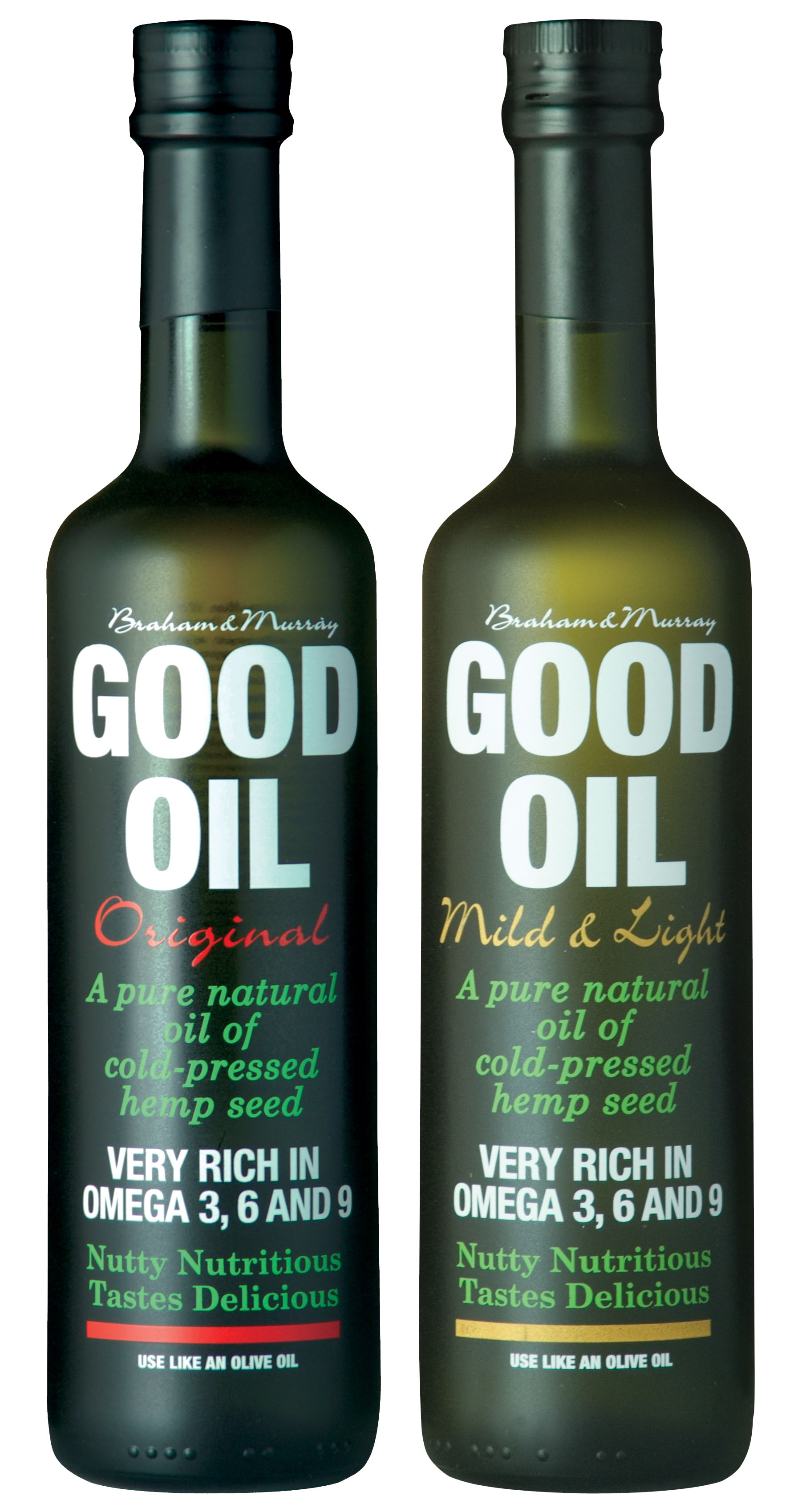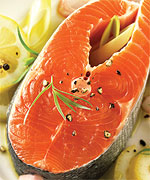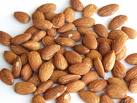
London: Celebrity health guru Neish Joshi has devised easy and simple New Year resolutions for great skin, which anyone can follow and youll also notice the benefits within a few weeks.
1. Easy food swaps
Making healthy food choices doesnt mean you have to exist on lettuce alone. Try these simple food swaps which will to give your health a boost, without compromising on taste:
– Swap potato for sweet potato when making wedges
– Snack on wasabi peas instead of dry roasted peanuts
– Use GOOD OIL on your salad instead of heavy dressing
– On pasta, ditch cheese sauce and use fresh tomato instead
– Use spices instead of salt when seasoning food
– Swap sweets for dried fruit (dried mangoes are the sweetest)
– Ditch crisps for salted popcorn
– Desperate for dessert? Try chopping up a banana, dipping the chunks in melted 70% coca chocolate and pop in the freezer until the chocolate hardens. Delicious!
– Carry figs around with you for an emergency on-the-go sugar fix. A great substitute for chocolate bars
– Swap a drizzle of cream in tomato soup for a drizzle of GOOD OIL
– Swap regular milk for semi skimmed or skimmed. Or for the more adventurous, try soya milk
– Add extra vegetables whenever you can. A few sautéed pieces of celery to Bolognese sauce or try adding mushrooms and peas to your favourite curry
– Swap butter in chocolate cake for beetroot yes really, this works! Beetroot also gives the sponge a rich red hue
– Swap bar snacks for your own roasted soya nuts
2. Aim for as much as you can a day
We all know we should aim for 5 portions of fruit and veg a day, but unfortunately this isnt always possible. Instead aim for as much as you can and dont throw in the towel if you have a bad day and give up altogether. Just remember tomorrow is another day and a fresh start.
3. Dont avoid oil
When people go on a health kick, they immediately think about foods they should eliminate from their diet, which often includes oils. In fact you should include oil in your diet on a daily basis, just make sure its the right kind. GOOD OIL is a good source of essential omega-3 and omega-6, which the body needs to maintain a healthy heart. Research shows that reducing saturated fat intake and swapping it for oils rich in EFAs contributes to an improvement in cholesterol.
4. Sip sip and sip again
The thought of drinking the recommended 2 liters of water can be pretty daunting. Dont panic and try to gulp it down in one go. Make sure you have a bottle to hand and sip throughout the day, youll reach your target before you know it.
5. Juice it up
Not everyone is happy to eat through piles of vegetables and fruit every day, so make life simpler and start juicing. Its easy to replace one portion of fruit and veg a day with a juice, here are some of our favourites:
– Carrot, ginger and celery for breakfast
– Mango, mint and lime for a lunch treat
– A tasty blackberry and cranberry smoothie with a drop of GOOD OIL for a healthy afternoon drink
6. Swap coffee for herbal tea
We know youve heard it before and that despite previous attempts to switch to green tea your body still craves a caffeine-laden pick-me-up in the morning. However, consider this: herbal teas have a multitude of benefits and they dont over-stimulate, as coffee tends to do, helping you to maintain a sharper concentration and have more energy.
Try swapping a least one cup of coffee a day for a herbal tea and gradually reduce your intake of coffee. Green tea also has the added benefits of antioxidents
7. Get green fingered the new way to workout
Grow your own is becoming more popular than ever. But whats more, a gardening session burns an impressive 350 calories. So ditch that gym class and get digging in your back garden or join a local community gardening project.
8. Cheat exercise
Dont like the thought of spending hours in front of the latest WAG workout DVD. Neither do we. Incorporating exercise into your daily routine is easier than you think and we have a few suggestions to get you started. Start with taking the stairs, try getting off the bus a stop earlier and walking, carry your bags home from the supermarket and do a few squats or sit ups in front of TV when no one is looking.
9. Reward yourself the smart way
Youve had a promotion or its your birthday, no matter how big the celebration, dont use it as an excuse to binge on unhealthy food and drink. Instead reward yourself with a holistic treat such as a massage or shopping trip for a new yoga outfit. The result? Youll feel great inside and out.
10. Eat in the right environment
With busier than ever lives, many of us dont sit down for our three meals a day. Eating on the go or not eating at all has become common practice. Having ad hoc eating patterns can result in poor digestion and eating on the go makes it difficult to choose healthier foods. Make a conscious effort to eat at least one of your meals a day sat down at a table. You only need to set aside 30 minutes and you can invite work colleagues, friends or family to join you.
11. Have a sin day
Going on a New Year health kick often involves cutting out the foods you love and when it comes to chocolate, cherish. Keep yourself motivated and sane by having a sin day every week, where you can treat yourself to your craving of choice. A week long of deprivation would fail to inspire the most enthusiastic of us; by having a sin day youll have something to look forward too, which will keep you motivated.
And above all remember to take one step at a time. Each day at a time. If you fall of the track, start again! Dont think of this new you as What do I need to eliminate from my diet? Think more as what can you increase in your diet and What can you have instead of
About GOOD OIL
– Produced in Devon, GOOD OIL is a pure natural oil made from 100% cold pressed hemp seed
– GOOD OIL is a perfect blend of delicious taste, health benefits and stylish packaging
– The GOOD OIL founders, Glynis Murray & Henry Braham, spent ten years perfecting the processes to ensure the taste was just right and the nutritional value optimized. This involved finding the best varieties to grow for the right taste, developing growing and harvesting methods, and mastering the cold pressing technique
– GOOD OIL is a delicious, versatile culinary oil. Use it as you would an olive oil: drizzle it on salads and vegetables, pour on pasta or baked potatoes. Add to soup, smoothies, use to roast potatoes or just eat with crusty bread, on its own or with Balsamic
The GOOD Taste:
GOOD OIL Original has a delicious fresh and nutty taste
GOOD OIL Mild & Light has a milder flavour, but still contains the same level of hemp seed goodness
Hugh Fearnley-Whittingstall is a fan; “GOOD OIL is the most interesting culinary oil to come my way for a long time. It has a unique nutty flavour, with a pleasing, lingering aftertaste. As a gourmet oil, it stacks up with the best extra virgin olive oils, having plenty of character for trickling on toast, over soups and salads, and making all kinds of dressings. And – perhaps the ultimate test – it makes terrific roast potatoes.”
The Health Benefits of GOOD OIL:
With zero trans fats and approximately half the Saturated Fat of olive oil, GOOD OIL is one of the healthiest (and tastiest) culinary oils on the market
Good Heart
GOOD OIL is rich in polyunsaturated fatty acids, including essential omega-3 and omega-6
o GOOD OIL is rich in omega-3 and 6, which the body needs to maintain a healthy heart. Research shows that reducing saturated fat intake and swapping it for oils rich in EFAs contributes to an improvement in cholesterol
o The ideal ratio for humans to absorb omega-3 and 6 is between 2:1 4:1. GOOD OIL is at 3:1 so the ideal balance to complement the bodys needs
o GOOD OIL has a higher omega quantity than most other culinary oils and provides an easy, versatile and delicious way to ensure the body is supplied with EFAs everyday just 10ml of GOOD OIL per day will make a substantial contribution to the intake of essential fatty acids required for good health (Source: The Kings Report available upon request)
Good Skin
GOOD OIL contains GLA (Gamma Linolenic Acid – a fat in the omega-6 family), the active ingredient in Evening Primrose Oil and considered to be a powerful key to vibrant health and radiant beauty
o Research shows GLA is good maintaining healthy skin, as well as having a beneficial impact on the effects of PMS
o 10ml of GOOD OIL contains as much GLA as 6 average Evening Primrose capsules
Keeping the Goodness in
To maximize the health benefits, it is recommended to take 10ml of GOOD OIL per day in cold format e.g. drizzled on salads and vegetables, added to smoothies and soups, as a dip, or used in cold recipes such as salsa or guacamole to name a few
As a food oil, GOOD OIL can be used for roasting, baking and cooking and doesn’t need to be treated any differently to other oils. GOOD OIL can be used for a wide variety of every day uses for food preparation but is not suitable for deep-frying (deep-fried food is generally not a healthy way to prepare food). Heating above 150C reduces the beneficial properties of GOOD OIL.
The GOOD OIL Crop:
Hemp is a very sustainable crop and beneficial to the environment
o Hemp crops require little water to grow
o When the remaining crop is left to rot on the ground following bailing, it imparts essential nutrients back into the ground, these nutrients are great for earth worms
o Hemp provides an excellent habitat for wildlife. The fields are left to fallow in winter, the birds are attracted to the earth worm rich ground
o Hemp is planted late in spring and requires no mechanical or chemical weed control during the growing period, thereby reducing fuel consumption on the farm
o Hemps long tap root is excellent for soil structure and conditioning
o The fast growing Hemp crop is a very efficient carbon sequester
Every aspect of the plant is used – absolutely nothing is wasted
GOOD OIL Stockists:
GOOD OIL is currently stocked at most branches of Tesco, Waitrose, Morrisons, Sainsburys and Co-Op, as well as leading department stores Harvey Nichols and Selfridges
RRSP £5.99
The GOOD WEBSITE:
For more info on the GOOD OIL farm in North Devon, delicious recipes, articles on nutrition and to sign up for the newsletter please visit www. Goodwebsite.co.uk
 The total control group consisted of 622 participants with no supplement intake or serious diseases. Tests of cognitive function, including attention, memory, language and reasoning skills, were administered at the beginning and end of the study. Blood samples collected at the initial examination were analyzed for apolipoprotein E (APOE) genotype and other factors.
The total control group consisted of 622 participants with no supplement intake or serious diseases. Tests of cognitive function, including attention, memory, language and reasoning skills, were administered at the beginning and end of the study. Blood samples collected at the initial examination were analyzed for apolipoprotein E (APOE) genotype and other factors.  The total control group consisted of 622 participants with no supplement intake or serious diseases. Tests of cognitive function, including attention, memory, language and reasoning skills, were administered at the beginning and end of the study. Blood samples collected at the initial examination were analyzed for apolipoprotein E (APOE) genotype and other factors.
The total control group consisted of 622 participants with no supplement intake or serious diseases. Tests of cognitive function, including attention, memory, language and reasoning skills, were administered at the beginning and end of the study. Blood samples collected at the initial examination were analyzed for apolipoprotein E (APOE) genotype and other factors. 



